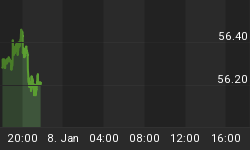Fed Chairman Greenspan hugged and puffed and succeeded in creating the biggest hot-air balloon in US history. In September 1999 (bear market signal) the Greenspan balloon developed a tear. Nobody noticed that little tear. Greenspan kept blowing into the balloon -- but alas, air was beginning to escape through the tear. By January 2000 the balloon reached its greatest size, and suddenly the tear in the balloon became a gaping hole.
Then, to Greenspan's horror, the balloon began to collapse.
Despite all, Greenspan continued to blow into the balloon. His face turned red, The more he blew, the redder his face became. As I write this morning, Greenie's still blowing into the deflating balloon. So far, he's failed, and now he's fast running out of breath. But the Green Man will keep blowing. After all, what are his alternatives?
So where are we now, and what's happening? In the big picture, we're in a primary bear market, a market that has been "held up" to a large extent by the Fed's reflation activities.
What about today's still sky-high stock valuations? What about today's sky-high prices in homes? Today's home prices are a product of dirt-cheap mortgages. The S&P selling at a ridiculous 32 times earnings is a product of thousands of professionals who are dealing competitively with OPM, better known as "other people's money." Their game is called "trying to beat the S&P." It's a relative game. If the S&P is down 20% and your OPMs are down 15%, you're winning. It's quite a game, and all the money managers are playing it.
That's the big picture, as I see it.
The "smaller" picture is that since October 2002 the markets have been in a counter-trend rally or a correction of the massive losses of 2000 to 2002.
The still-smaller picture is that the counter-trend rally that just may have topped out. I say this because the Transportation Average never confirmed the series of new highs in the Dow.
Today we're seeing many cross-currents.
The bonds appear to be topping out. The long T-bond has formed a definitive "head-and-shoulders top, and the break below support came today. This tells us that at least for the time being, long rates have bottomed and are now heading higher. The direction of long rates is now up, and this could (should) affect mortgage rates.
I've been saying that the Fed is vitally concerned with asset inflation. The Fed wants to keep assets (read real estate and the stock market) rising. Housing and the stock market is where American consumers have their assets. If housing and the stock market head down, the game is over -- and the Fed knows it. I've said that Greenspan doesn't give a damn about what you pay for tooth paste or a loaf of bread, what he cares about is that the price of your house keep climbing and the stocks in your portfolio at least hold their own.
I want to stress the importance of the breakdown in the bonds. As rates go up, it will kill one of the main bullish phenomena of the post-crash economy, and that's the refinancing of mortgages. Refinancing has been where consumers have received their spending money. If refinancing is history, consumers could rapidly cut back on their spending. And that what mean the "recovery" sputtering to a halt.
Then there's the dollar. Following an extended decline, the Dollar Index hit a low on June 16. Since then the Dollar Index has been rising, and today after an eight-day rally the Dollar Index touched it 50-day moving average. Like every other tradable item, the Dollar Index inhales and it exhales. Right now the Dollar Index is exhaling. It's seeing how far it can correct on the upside. But basically, the Dollar Index is in a bear market.
Following its April to May rise, gold is now falling. And we have to wonder that declining gold means? The obvious explanation is that the Fed is failing to reinflate the balloon, and this mean deflation. The initial reaction of gold to deflation is to decline. With the dollar stronger today, it takes less dollars to buy an ounce of gold.
The real danger to the economy arrives if deflation really "takes hold." If that happens, debts looms to the fore. Deflation is debt's worst enemy, and if the US economy lapses into deflation we're going to see bankruptcies in every corner of the land. Why is this? It's because deflation makes money harder to accumulate. Deflation is death on profits, and deflation causes lay-offs in industry as every company seeks to cut expenses.
So the first reaction to deflation would be a rush to accumulate dollars, dollars to keep one afloat, dollars to carry debt, dollars to pay off mortgages -- dollars to ward off bankruptcy. This is what happened in the 1930s. Let's hope it doesn't happen today.
If mass bankruptcies become the order of the day, then investors will seek out the one asset that can't go bankrupt, and that one asset is gold.
Looking at the higher Dollar Index today, I have to wonder whether this is the beginning? Are we seeing the beginning of a rush to gather dollars, dollars that are needed to carry the incredible debt-mountain of $38 trillion dollars that are hanging over every area of the US economy?
At any rate, that's the Russell view and those are the latest Russell thoughts. The rest, obviously, is up to the markets.
















